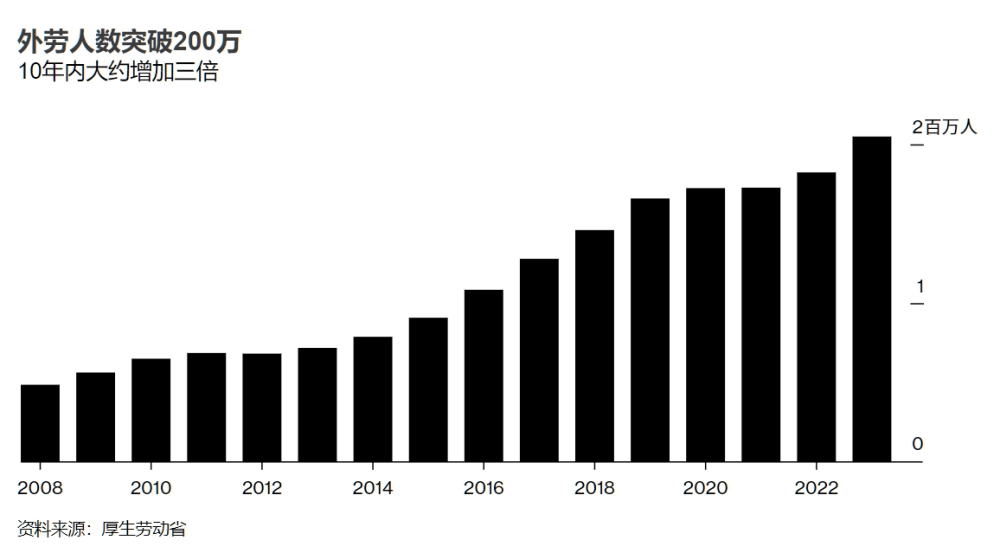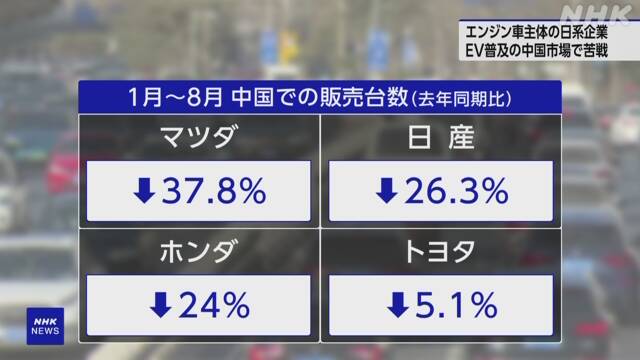Last year, the number of foreign laborers working in Japan surpassed two million for the first time. Japan is increasingly relying on foreign workers to address the growing labor shortage resulting from declining birth rates and an aging population.
According to an announcement by the Japanese Ministry of Health, Labour and Welfare on the 26th, as of the end of October 2023, the number of foreign laborers increased by 12.4% from the previous year to 2,048,675, marking the highest figure since 2008. Over the past decade, this number has roughly doubled. The number of companies employing foreign workers also increased by 6.7%, reaching a record high of 318,775.
In Japan, the population aged 15 to 64, which plays a crucial role in productive activities, has been declining since reaching its peak in 1995. Cases of businesses discontinuing operations due to labor shortages are on the rise, making foreign workers an indispensable means to fill the gaps in the labor market.
According to a research report released by the Japan International Cooperation Agency (JICA) in 2022, in order to achieve the Gross Domestic Product (GDP) target for Japan (average annual growth rate of 1.24%), the number of foreign laborers is projected to double within the next 30 years, reaching 4.2 million by 2040 and hitting 6.74 million.

A survey conducted by the Japan Chamber of Commerce and Industry and the Tokyo Chamber of Commerce and Industry reveals that nearly 70% of small and medium-sized enterprises (SMEs) are facing a labor shortage, reaching the highest level since the survey began in 2015. Additionally, according to a survey by the Teikoku Databank, the number of businesses that went bankrupt in 2023 due to labor shortages reached 260, marking a historic high, with the possibility of remaining at elevated levels in the future.
In terms of the scale of organizations hiring foreign workers, companies with fewer than 30 employees constitute the majority, accounting for 61.9% of the total. This indicates that smaller enterprises often rely more on foreign labor to ensure an adequate workforce.
In June of last year, the Japanese government expanded the applicable industries for the "Specific Skills No. 2" visa from 2 to 11, aiming to facilitate the employment of foreign workers. A review of the Technical Intern Training Program is also under consideration, with a proposal developed by an expert group in November 2023, including measures such as relaxing restrictions on the transfer of interns.
The report on foreign labor in Japan indicates a total of 2,048,675 foreign workers, an increase of over 220,000 from the previous year, marking a 12.4% growth and setting a historic high for the 11th consecutive year since 2013.
Ranked by nationality:
Vietnamese workers are the most numerous, accounting for 25.3% of the total, with 518,364 individuals, followed by China with 397,918 individuals, and the Philippines with 226,846 individuals.
Ranked by the fastest growth rate:
Indonesia with 56%, Myanmar with 49.9%, and Nepal with 23.2%.
In terms of residency status:
Japanese and their spouses are the highest at 615,934 individuals, followed by professionals such as engineers and researchers with specialized knowledge and skills at 595,904 individuals, and technical interns at 412,501 individuals.
By industry:
Manufacturing has the highest number of workers at 552,399 individuals, followed by the service industry with 320,755 individuals, and wholesale and retail with 263,555 individuals.
The Ministry of Health, Labour and Welfare in Japan stated, "Industries such as construction and healthcare, considered to be facing a labor shortage, have shown higher growth rates. The growth rate of foreign workers is approaching pre-pandemic levels. Due to the recovery of economic activities from the COVID-19 pandemic and the domestic labor shortage in Japan, it has returned to its original level."





